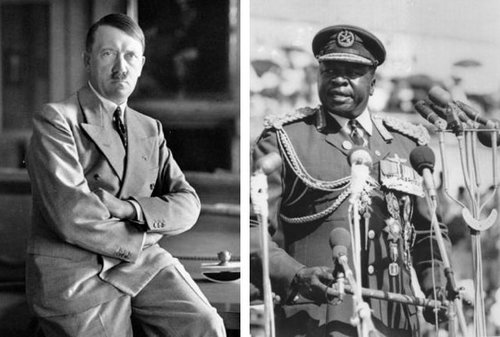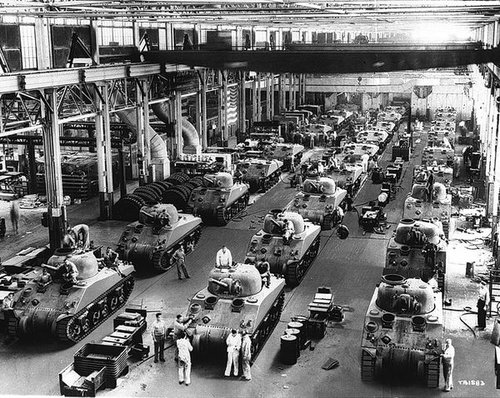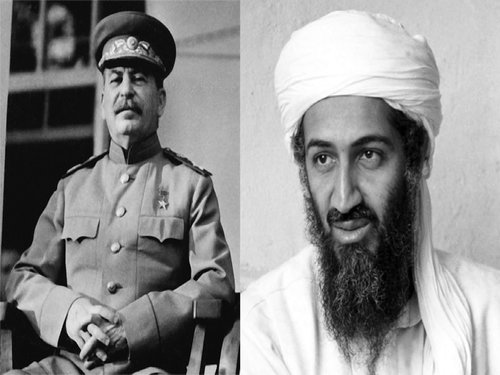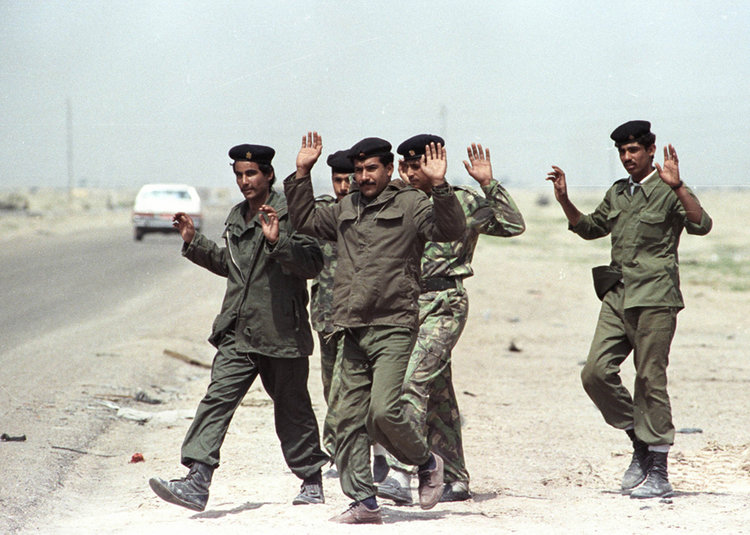By Stanley J. Wiechnik
“The first, the supreme, the most far-reaching act of judgement that the statesmen and commander have to make is to establish … the kind of war on which they are embarking; neither mistaking it for, nor trying to turn it into, something alien to its nature. This is the first of all strategic questions and the most comprehensive.”
—Carl von Clausewitz
INTRODUCTION
War is a continuation of politics by other means, we are instructed. Based on that axiom, the manner in which a state fights a war will be inexorably tied to its political nature. Democracies fight wars differently than monarchies and principalities. Clausewitz recognized this when he saw the type of army post-revolutionary France was able to field: “Suddenly war again became the business of the people – a people of thirty millions, all of whom considered themselves citizens…. The people became a participant in war; instead of governments and armies heretofore, the full weight of the nation was thrown into the balance.”[1] Similarly, wars conducted by religiously or ideologically motivated participants, sometimes called doctrinal wars,[2] tend to be more brutal than wars that do not involve this ideological component.[3] Yet despite these distinctions, American strategists tend to plan and execute all wars the same way, regardless of what type of enemy they are fighting.
This article will explore how the political nature of the combatants changes the character of the war being fought. It starts with the idea that wars are different based on the type of political organization fighting the war. Democracies fight wars differently than autocracies, which fight wars differently than theocracies. The political nature of each of these types of government offer both strengths and weaknesses during the campaign. To develop a complete strategy the military and political leadership must take these differences into account. Failing to do so risks turning the war into “something alien to its nature.”[4]
For convenience sake, I use another Clauswitzian term, the strategic center of gravity, to clarify how and why the opponent’s political nature matters. I will refer to a combatant’s political nature as their political center of gravity (PCoG). The PCoG is the source of the political system's power. It is what binds the people together as a group and gives them their motivation to act in concert towards a specific political or military goal. Sometimes it is faith in, and fear of, an autocratic leader like Kim Jung Un. Sometimes it is belief in individual rights, the rule of law, and a constitutional order, like in a democracy. Sometimes it is the absolute belief in an ideology (like communism) or a theology (like Salafism) that binds and motivates the faithful. It can even be a mixture of these. But whatever the source may be, it is much easier to refer to it as the PCoG than continual use of long-winded phrases. Identifying primary and supporting elements of our enemy’s political power allows us to better target those power centers. If war is truly an extension of politics by other means, then the source of our enemy’s political power is a valid, if not critical, target. Therefore, accurately identifying that target, and understanding how to eliminate, preempt, or co-opt its power, is a critical part of any strategy.
All political entities exist within a sociocultural system. They are a part of the system, but not the only part. Other elements of the system interact with the political leadership and can either support them or oppose them. The oft-cited elements of national power –– diplomatic, information, military, and economic –– are just such elements and represent tools one nation can use to influence another. But, like tracers, they go both ways. Even as a state employs these elements in support of their political objectives, a wise adversary will seek to attack these elements in order to limit their potential effect. Where possible, an adversary will seek to constrain its enemy’s diplomatic relations, sow doubt in the veracity of the nation’s leadership, or cause panic in their financial markets. Not all political systems rely on each of these elements equally. Therefore, it is worth thinking about which political systems are most vulnerable to attacks on which element of national power.
WAR AND THE POLITICAL CENTER OF GRAVITY
Clausewitz recognized the nature of war is different when conducted by a prince or king, as had been the case in Europe for centuries, than when it is conducted by a state buoyed by the idea of individual citizenship, as is the case of the new French Republic. A similar observation was made by mid-20th-century British scholar Martin Wight regarding what he termed “Doctrinal Wars.”[5]These wars differed from other types of wars because of the political aspirations of the combatants. “Doctrinal wars are wars of righteousness and conviction based on doctrines that are not only right for us; they are right for everybody, everywhere. They are wars to bring one’s religion or one’s ideology to foreigners, and all people around the world.”[6] Based on this conviction, these wars tended to be longer, more brutal, and harder to broker a peace.[7]
These distinctions identified by Clausewitz and others originate in the character of any given war. But, often, the source of the differences can be traced back to the combatant’s political system. In broad terms, there are three basic political systems that fight wars differently enough to identify concrete distinctions: autocratic political systems, as in the case of monarchies; democratic political systems as in the case of republics; and, ideological political systems as in the case of wars of religion or a controlling ideology like communism. This distinction yields three vastly different political centers of gravity: autocratic, democratic, and ideological.
Autocratic systems are the easiest to provide examples of since these systems have been the dominant system throughout mankind’s history. These are the monarchies, empires, principalities, and other political entities where, historically, political power vests in a central leader and the leader’s vassals and is transferred down family lines. In the modern age, the transition to power is rarely a matter of birthright. Power is seized by the dictator, with or without force, and legitimized by an election where there is only one viable candidate. This is often done with the backing of the majority of the population, similar to the regimes of Adolf Hitler or Idi Amin. In the eyes of the majority of the population, political power rightly vests in the person who is the central leader, even if not all the population actually supports the leader.
Strengths. An autocratic system’s greatest strength is that all of the elements of national power are concentrated in a limited group of key players, including the entity’s leader. This means that attacks on, or attempts to influence, other sources of power, like the population, are likely to be ineffectual. Depending on how repressive the regime is willing to be, even attempting to exploit cleavages in ethnic or religious segments of society may have little effect.
Weaknesses. In any medium- to large-sized political entity, control cannot be effectively wielded by one person. This means that there will be a group of close confidants or even family members –– the vassals –– who will have direct influence on the autocrat and some level of control. Some may even have aspirations to be the autocrat someday. Finally, the autocrat needs to control the economy to be able to keep their vassals happy and fund their military/security services. All of these are appropriate targets.
DEMOCRATIC SYSTEMS OF GOVERNANCE
An assembly line at the Detroit Arsenal Tank Plant in Warren. Between 1941 and 1945, the plant reportedly built an estimated 22,000 tanks. (U.S. Army Photo)
Democratic systems of governance are relatively new on the world stage. Once seen as the end of history,[8] democracies have been in the decline in the last few years.[9] Democracies are built on the ideal that political power vests in the individual and is granted to the government by the individual. The government acts on behalf of the people to advance the general welfare. Unlike an autocratic system, the government is answerable to the general population, usually through elections. This means that the true source of political power is the general population and the appropriate target of an influence campaign is the general population.
Scholars have recognized that democracies deal with wars differently than autocracies.[10]Sometimes this is an advantage, and other times not. On the plus side, some argue that soldiers of democracies fight with better initiative and leadership,[11] that democracies have stronger economies and therefore are more likely to win wars,[12] and that democracies have a “fraternal” connection that cause them to support each other during times of conflict.[13] Conversely, in the negative column, democracies require the political support of the population. As a result, therefore democratic leaders must gain public support to prosecute a war[14] and must maintain that support to sustain the war effort.[15]
Strengths. A democratic system’s strength lies in its ability to distribute authority over a large number of people, who will act independently but with a common purpose. Democracies tend to be wealthier, and because the population is not constrained by a centrally-controlled market system, their economies will tend to be more diverse, which means that the economy itself is less likely to be effectively targeted.
Weaknesses. A democratic system’s greatest weakness is its population, who can be fickle and easily influenced by demagogues. This makes coordinated action difficult to maintain over the long term except in times of direct threat (real or perceived). Also, ethnic or religious cleavages are easily exploited.
Ideological Systems see a deeply held belief system as the source of political authority. These systems are rare. In most cases an ideology plays a supporting role in either a democratic or an autocratic system. For example, the ideal of human rights is a foundational belief in a democracy, but political power still resides in the people. Three examples of ideology-based systems are communism, fascism, and political Islam. In each the tenants of the ideology subsume the traditional aspects of political authority. People follow these systems because they believe the core tenants of the ideology represent revealed truth. Following the ideology is not just the right path for the adherents, but the true path for all mankind. In that sense, ideological systems are the most dangerous, since any atrocity is justified. This is particularly true of a religious-based ideology, since God’s commandments can never be questioned and any actions taken in God’s name are morally justified. Ideological systems that are not simply autocracies cloaked in religious garb will outlive their leaders, however. There will be a party chair or a caliph, but they are only worldly vessels. The real power lies in the ideology, as demonstrated by communism’s survival after Joseph Stalin’s demise or al-Qaida’s survival after the death of Osama bin Laden.
Ideological wars, or doctrinal wars, tend to be associated with an ethnic, religious, or political identity. This can make the war much more personal, as losing the war forces the combatants to question key elements of their understanding of the world and their place in it. These “are wars waged for a nobler, higher, goals which cannot be compromised, or waged against false and menacing doctrines that cannot be tolerated.”[16] A specific subset of ideological wars is religious war. Religious civil wars “result in higher combatant deaths; they last longer; they are more likely to recur once ‘ended’; and they are four times as deadly for noncombatants.”[17] A war based on religion can have a different character than a war based on either democracy, autocracy, or even other forms of ideology or identity. For the true believer war can change from a means to an end, to a morally defendable end in-and-of itself.[18]
Strengths. An ideological system’s strength lies in its adherent’s dedication to the ideology. This devotion is individualized, which means that, unlike the autocratic system, no single leader or group of leaders is likely to be critical to the group’s survival. This individualized devotion means that, like a democratic system, authority to act can be distributed. It is also not dependent on a military or a security service to survive or even expand. A dedicated follower can always find a weapon to use against the enemy of the ideology. Finally, unlike an autocracy or a democracy, even if you win on the battlefield, there will likely be no one there to sign a surrender on behalf of the ideology. This means that the ideology may simply go underground until the conditions are right for it to reemerge. The only true way to defeat an ideology is to discredit it in the minds of potential followers, thus delegitimizing it as a political object.
Weaknesses. A purely ideological system is a one-trick-pony: a belief that the ideology is inevitably correct keeps the form of governance alive. This presents an ideological group with two problems. First, if it wants to grow, it must gain (or conquer) new converts. Second, if it fails to meet the expectations of the followers, the ideology may lose its control over the population. This means that the two primary ways to defeat an ideology is either through discrediting the ideology or through exhaustion.
The descriptions listed above are ideal types and overlap is possible, if not probable. For example, to some, liberal democracy is an ideology that stands for human rights and is therefore superior to autocratic systems. Also, autocratic leaders can engage in “religious outbidding,”[19] when they calculate that invoking religion will help them survive. All of the potential aspects of the three ideal types need to be considered when developing a strategy.
STRATEGY
The political center of gravity can assist in designing a strategy to achieve political goals. To do this, a few preliminary factors must be identified:
1. What is the political end-state you are trying to achieve?
2. How far are you willing to go to achieve this end-state (offensive and defensive)?
3. What is the primary PCoG you are engaged with?
4. What are the secondary elements that support your adversary?
5. Other than the adversary, what other entities (friend or foe) need to be considered?
First, the military leader designing the campaign must know the political end-state they are seeking to achieve. Without that clearly identified, everything that follows will be the noise before the defeat. Second, what is the intensity of national interest of the opponent or objective? Is this something the nation is willing to commit troops to and accept losses or are they considering lesser actions?
With these, standard, yet preliminary questions tentatively answered, you come the question of identifying your adversary’s PCoG. In certain cases, like with the Islamic State or North Korea, the answer is clear; the Islamic State is ideological and North Korea is autocratic. In others, like Iran, the answer is more nuanced, being a combination of ideology and autocracy. While Iran is primarily an autocracy, even though it is built on an ideological base, the state demonstrates why the fourth question, dealing with secondary elements, is important. There are at least three secondary elements for Iran that either offer targets to attack or serve as obstacles that should be neutralized as best as possible. First, there is Iran’s military, and in particular, the Revolutionary Guard. Second, there is the economy, dominated by oil production. Third, there is its predominant religion, which is a strong uniting factor in the country and needs to be co-opted by clearly demonstrating the action is not a religious war.
The fifth question deals with other entities, friend or foe, who must be taken into consideration. Looking at Iran again, the foes that must be addressed are Russia, who provides military support, as well as state-supported terrorist groups like Hezbollah. Allies in the fight against Iranian hegemony could be Israel and Saudi Arabia, as well as other Sunni Arab countries.
There is not a standardized solution for each situation. However, given the framework outlined here, there are some general principles that may prove helpful with identifying where one’s efforts might be the most productive:
1. In offensive operations, identify and exploit weaknesses in your adversary’s PCoG. In an autocratic system, determine which is the weakest of the vassals, or the economy, or the military. For example, a specific attack, but one less than armed conflict, might include wide or narrow sanctions on the economy, as were used against Iran to get them to negotiate on nuclear weapons. In a democratic system, you might want to directly influence the population, as al Qaeda terrorist bombings accomplished in Spain prior to their March 2004 elections. In an ideological system, you could wear it down until it collapses from exhaustion and is discredited, as in the case of communism. In defensive operations, your adversary will seek to exploit your weaknesses, so you must prepare to defend against such actions.
2. The ideal application of the PCoG is to match the strategic effort with the strategic goal, using only those forces needed. The best recent example of this is Operation Desert Storm, where the forces of Saddam Hussein were pushed out of Kuwait. In this case, the war proceeded much like a sixteenth century battle between princes. There was no need to destroy the Iraqi Army or march on Baghdad to achieve the limited objectives and win the war. Saddam did as any rational autocrat would who knows his power is, at least in part, dependent on maintaining a military. Once it was clear that he could not win, he was happy to negotiate terms. It was the proper allocation of blood and treasure for long enough to force surrender on terms acceptable to the victor.
3. One can fail to recognize the political nature of an enemy and, therefore, apply the wrong strategy. For example, using a limited Gulf War strategy against an ideological opponent would likely fail. This is intuitively obvious. For example, if Kuwait were taken by the Islamic State and al Baghdadi, a counterfactual outcome from a limited strategy halting after only 100 hours would likely achieve very little. The faithful warriors would not be deterred by such actions. They would still fight to the death, all the while publicizing their martyrdom so that others may one day follow in their footsteps.
Iraqi soldier surrender to an American position during the Gulf War, March 19, 1991.
Therefore, it is important to match your strategy to the enemy’s PCoG. If you do not align your operations with the appropriate PCoG, you will either spend far more time than necessary to achieve your objectives, or you will fail. For example, in Iraq American counterinsurgency doctrine stated that the people were the center of gravity. That would be true if Iraq was a democratic system. It was not. The United States toppled one large autocracy, which was eventually replaced with a multitude of smaller autocracies operated by local leaders. Intuitively, the U.S. realized this, and worked with key leaders to influence events. But the overall strategy of holding elections to legitimize a system that was not the true PCoG was doomed to failure. The United States military and coalition forces wasted time and treasure trying to influence the wrong PCoG, and thereby left the mission unfulfilled.
A similar mismatch is occurring in the fight with Islamic State and other Salafist groups. The last fight with an ideological opponent was during the Cold War –– the fight against communism. The United States used containment, which limited the Soviet Union’s expansion until they were exhausted. In the end, the system collapsed. The process does work, and you can defeat an ideological opponent, but first your strategy has to recognize against what you are fighting. We must be prepared for the same type of long term containment and exhaustion strategy in our current fight, as it is highly unlikely that recapturing territory from the Islamic State in Iraq and Syria will not ultimately mean defeating the Islamic State in toto.
Just as an enemy’s weakness offer targets to attack, one’s own weaknesses must also be defended. Each type of political group or government must take into consideration its own weaknesses and protect themselves. This is particularly true of a democracy, as waning public interest can present serious problems over the long term.
CONCLUSION
War can be a bit of a chimera, with a character that changes even as its nature remains the same. Perhaps the character of war has changed is because, over time, the character of political systems has changed? What is clear is that different political systems fight wars in different manners. Each political system offers advantages and disadvantages to the warfighter. When drafting a strategy, it is useful to consider these differences.




No comments:
Post a Comment